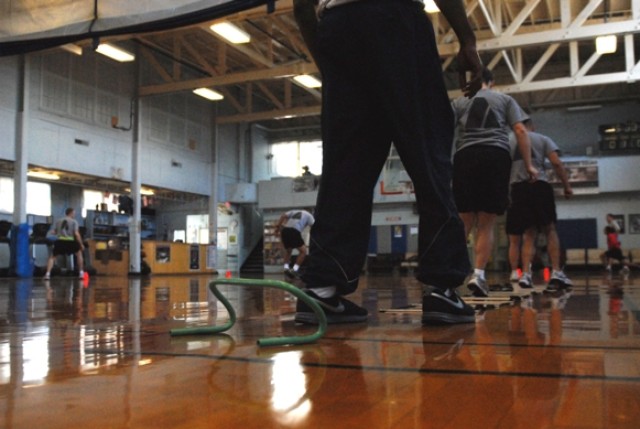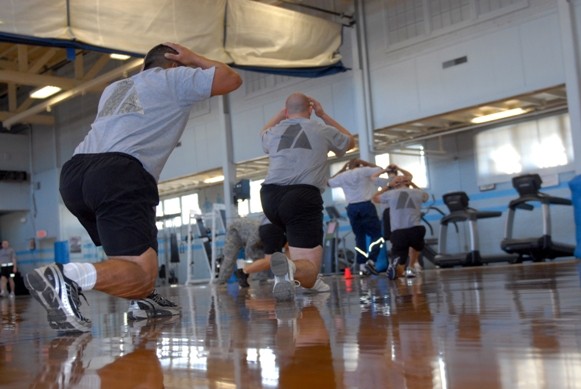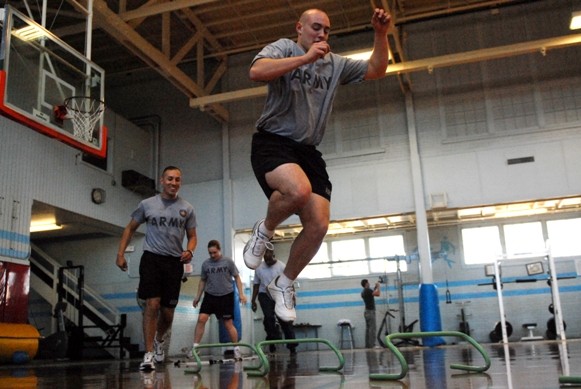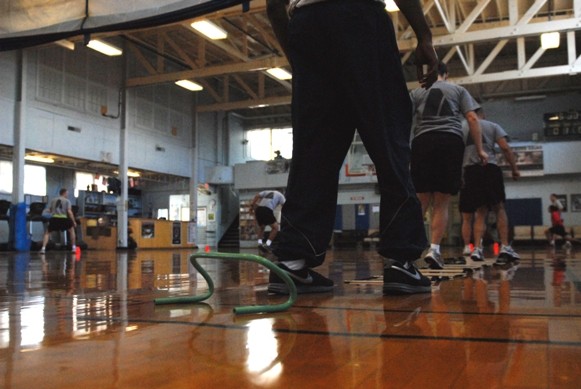JOINT BASE LEWIS-MCCHORD, Wash. -- October was the month designated, by the American Physical Therapy Association in 1982, as National Physical Therapy Month to celebrate physical therapy nationwide. This year's theme for National Physical Therapy Month was Move Forward: Physical Therapists bring motion to life.
Physical therapy (PT) in the U.S. Army has a history dating back to World War I, which has been moving forward by providing expert neuro-musculoskeletal care, which is the care for damaged nerve, muscles, bones, cartilage, and joints of the body, and rehabilitative services to all beneficiaries in multiple care settings since then. The Physical Therapists (PTs) at Madigan Army Medical Center here have been bring motion to life by providing care for acute lower back pain, ankle sprain, knee pain, plantar fasciitis, shoulder bursitis, tendonitis, impingement syndrome and shoulder dislocation.
In an effort to continue the progression of bringing motion to life the PTs provide a unique care opportunity to their patients by giving physical training classes in a small group setting outside of the hospital environment as a way of integrating them back into the community. One of the physical training classes offered is the Functional Knee and Ankle Class.
There are 7-12 patients per class who must meet the physical standards and are referred who may participate, whether it's active duty, retiree, and dependents. The class meets Tuesdays and Thursdays for a 4-6 week time frame at Keeler Sports & Fitness Center.
PT is to be considered a conservative treatment method to address healing, prevention of injuries and disabilities. PT focuses primarily on pain relief, restoring function and movement associated with injury. Other areas within the practice are ergonomic (body mechanic) training, fitness, wellness, and education and prevention.
"This [class] is designed to get patients from straight plain activities that they'll normally do in a hospital gym to a gym in the community to do more pivot, rigid sports and duty related activities," said Capt. Chelsea L. Jordan, an Army physical therapist at MAMC. "There is not as much out there [as far as scientific data for classes like this] as we physicians would like to have."
"There is some data out there for functional testing such as the type of measures that we do before and after class. We're taking that data right now to see what length the class should be and how much functional gaining these [patients] are getting, which is being developed." Capt. Jeremy A. McGuffey, a former armor officer now a Warrior Transition Battalion Soldier, participated in the class for one month after going through months of rehabilitation for an in-the-line-of-duty injury in which his heels were crushed along with soft tissue damage around the crushed heels.
"I've had a pretty significant increase in my mobility and a significant portion of that is due to the class," McGuffey said. "I came from a situation where I was non-weight bearing to weight bearing. I was wheelchair bound and relearning how to walk. Then not too long, after I moved on without crutches and I came to this class. There were a lot of improvements to be made; with the help of this class I learned how to relearn compensation, structural balance, mobility, agility and power."
The goal is for a patient's involved limb to be at least at 80 percent capability status of their good/strongest limb, but when it's not we recommend they stay in this course, said Jordan. At least 95 percent of the patients finish the class above that 80 percent capability status.
"I'm looking to get back into the class once I get my brace," said 1st Lt. John E. Arthur, a former infantry officer now a WTB Soldier. "I was at Walter Reed for a month, in a wheelchair for four months after that and then I walked with a cane up until about three months ago. I got rid of the cane with the help of this class. I would most definitely recommend this class to someone else."
"I think courses like this are very valuable to the [patients], because a lot of them are so used to going to therapy and hospital based programs that really mold them into that feeling that there's something wrong with them and that they're still not fixed," Jordan said. "So, when you bring them outside the hospital into a setting like this, with others who are not injured, it really gives them that feeling of confidence to go out and do more than they were willing to before."






Social Sharing